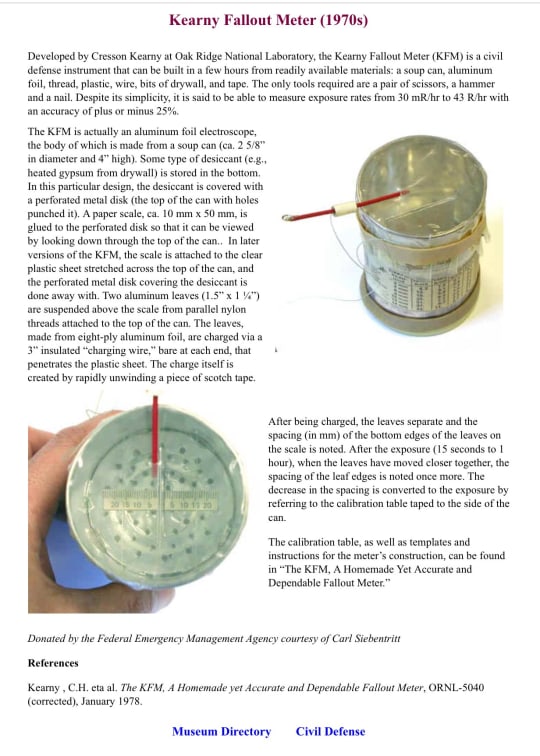Homemade Fallout Meter - KFM Model
At a glance..
Before a nuclear attack occurs is the best time to build, test and learn how to use a KFM. However, this instrument is so simple that it could be made even after fallout arrives provided that all the materials and tools needed (see lists given in Sections V, VI, and VII) and a copy of these instructions have been carried into the shelter.
The details..
In this book, Cresson H. Kearny explains why it is important for survivors of a nuclear war to have reliable means of measuring the changing radiation dangers in their own area. He introduces the concept of an electroscope fallout meter called KFM (Kearny Fallout Meter) which was developed at Oak Ridge National Laboratory and is as accurate as most civil defense fallout meters.
The author emphasizes that before building a KFM, people expecting a nuclear attack within hours or days should work with priorities such as building or improving high-protection-factor shelters, making and installing homemade shelter-ventilating pumps (if materials are available), storing water for each occupant, assembling all materials needed for one or two KFMs, etc.
To use this instrument accurately, an electrostatic charge must first be placed on its two separate aluminum-foil leaves by transferring from an electrostatic charging device via its charging-wire. When gamma radiation strikes the air inside the ionization chamber of a KFM during measurement process; charged ions cause part or all of the electrostatic charge on these leaves to be discharged resulting in moving them closer together.
Untrained families guided only by written instructions using low-cost materials found in most homes have been able to make this instrument successfully within 3-4 hours while studying operating sections for about 1% hours. This guide also includes detailed lists of tools needed along with step-by-step instructions covering different parts they need to build.
